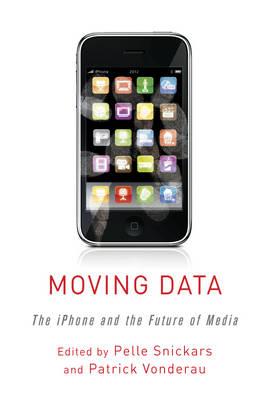 Editors: Pelle Snickars and Patrick Vonderau
Editors: Pelle Snickars and Patrick Vonderau
Publisher: Columbia University Press
Book Review by: Venkat Subramaniam
One of the people whose comments are on the back cover of this book describes the iPhone as no less than “the first landmark twenty-first century invention.” That person is Thomas Elsaesser, author of the book The Persistence of Hollywood.
The iPhone is no doubt ubiquitous these days, and as I write this today, the latest version of the product – iPhone 5s – just sold more than five million units this past weekend, reaching a milestone in technological and business history.
This invention has not only revolutionized communication among people but has also created a whole new culture that is international in scope. Not only are tens of millions the world over using the iPhone, but the variety and richness of that communication it has made possible is unprecedented.
It would be difficult to imagine for example, the development and rapid growth of a worldwide movement to fight poverty such as Global Citizen (which organized a concert presented a few days ago in Central Park in New York City that was watched on television and the Internet by a reported five million-plus people) without spread of its word through the iPhone.
Today, you can instantaneously share photos of your new baby born in New York with your sister in New Delhi, send a math problem from your dorm at Columbia to get its solution from your professor-friend in Colombia, or say Maligayang Pasko from your home in Manila to your daughter in Malaga.
The iPhone is a type of Smartphone that had as its predecessor the cell phone. Remembers when it was first used only (and occasionally) to make phone calls from outside your home or workplace? Then new versions of the cell phone enabled you to send text messages. Then came video capability.
The total convergence and integration of text, audio and video on the Internet was no less than a revolutionary event when that occurred. But when that was brought to mobile devices, the ease, speed and variety of communication attained new heights never before reached in history.
The iPhone is the veritable king and most advanced version of mobile communication devices today. It is a device that is not just a phone but one that is a computer and television set with built-in features of a personal digital assistant having a clock with an alarm, a calculator and much more to make your work and life easier.
Youngsters use their iPhone to do their homework, preferring it over the computer even if they have to find information in an online encyclopedia. News reporters use it to check facts and data in a flash and many of us use it to do everyday tasks such get directions and look for restaurants and shops. Not to forget the most ordinary reason why people began buying mobile devices in the first place: to make phone calls.
This book has a variety of essays by people with expertise in different aspects of mobile technology and its broad influence on our lives, along with its implications on our future.
It is organized into four parts, namely Data Archaeologies, Politics of Distribution, The App Revolution and Mobile Lives.
Moving Data focuses on the role of mobile devices as the primary platform for media companies involved in creation of content and its distribution.
These are creators of movies, producers of television shows, advertising agencies involved in creating commercials as well as buying time and space for those ads, print media such as newspapers and magazines, a large variety of Internet-based media such as online news sites, and much, much more.
In other words, all those companies and entities that produce and disseminate information and entertainment want to capture dollars from the people who own Smartphones.
Many of the issues involved in this activity are discussed in this book. Get it to find out what those issues are, and stay ahead in your business, your business and your life.






